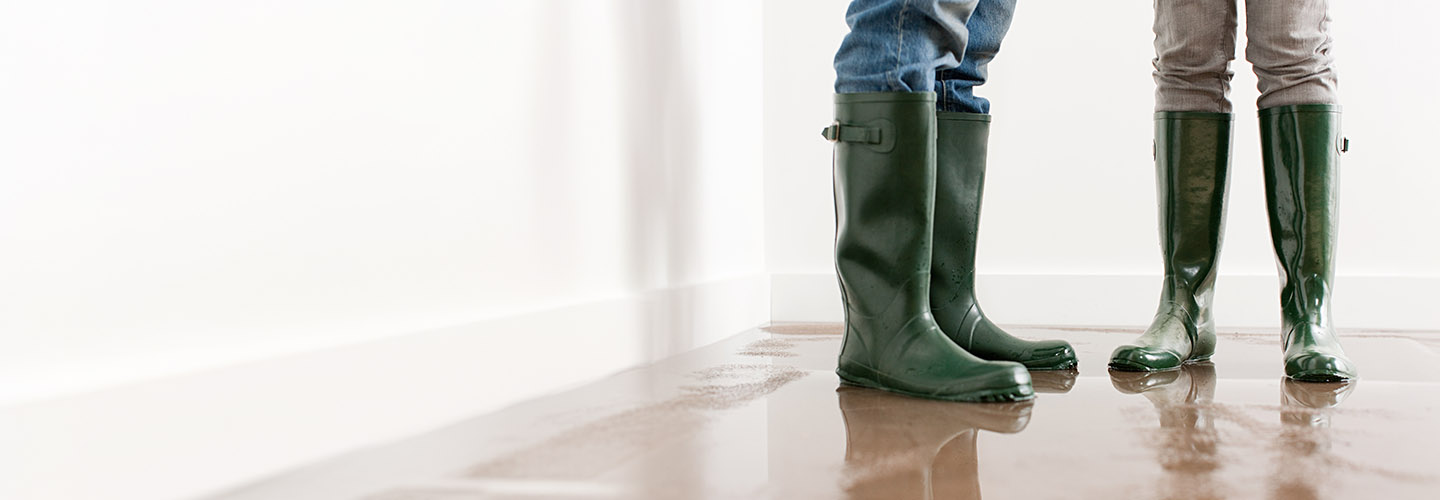Natural disasters are unpredictable, but we're seeing an increase in extreme weather events as the global climate changes – ranging from hurricanes and severe hailstorms to fast-moving wildfires. As the polar ice caps melt, they affect the flow of ocean currents, global weather patterns, rising sea levels, and even the movement of the earth’s tectonic plates. Left unchecked, climate change could lead to an increase in volcanic eruptions, earthquakes, and tsunamis, in addition to the extreme weather cycles already becoming apparent.
It’s worthwhile to consider how you can best prepare for a natural disaster. Recent years have been among the hottest on record, and we haven’t been spared flooding, hail, or wildfires in South Africa. What can you do to protect your home from the wrath of nature?
You can’t predict these catastrophic events, but you can put some basic precautions in place. If you’re a homeowner, being prepared is key. Regular maintenance, careful planning, and investments in safety upgrades can help keep your home and family protected.
1. Secure your roof and maintain exterior walls
Your roof is the most vulnerable part of your home during high winds and heavy storms. You can reinforce it with hurricane straps or clips, which attach the roof more securely to the walls. Have your roof inspected for damaged shingles or corrugated iron sheets – fixing these can prevent leaks and water damage. Regularly examine the gutters for debris and blockages that can cause an overflow and expose your foundations or exterior walls to water damage. Inspect your walls and foundation for cracks, weak points, or rising damp, and seal or repair them as needed.
2. Install impact-resistant windows and doors
Storms are common across SA during the rainy season, and apart from large hailstones, high winds can throw around debris or outdoor furniture that shatters ordinary window glass. Consider installing impact-resistant windows and doors made of laminated glass or reinforced plastic that can withstand strong winds and flying objects.
3. Protect your electrical and electronic systems
Electric appliances are particularly vulnerable to fire and flood damage. If your home is in a flood-prone area, consider elevating your electrical systems to reduce these risks – raise electrical outlets, switches, and circuit breakers above the expected flood level. Lightning storms, also common countrywide, can cause massive damage to appliances and electrical systems, and cause fires in thatched roofs. Install protection against power surges (and a lightning conductor if your home is thatched). Also consider adding a backup power supply, in case a natural disaster were to disrupt the national grid.
4. Secure your garden
Loose items like patio furniture, potted plants, or toys can become dangerous flying hazards during high winds. Store these items indoors before a storm hits or secure them with rope and heavy weights. Heavy outdoor furniture can become dangerous in gale-force winds, so secure them with furniture straps.
Regular inspections and repairs could reduce the damage and the cost of restoring the property if a disaster does occur
5. Seal gaps and openings
A storm that floods your house can cause a lot of water damage. Use weatherproof caulking or sealants to close any openings. Don’t forget to install or reinforce weatherstripping to stop water and wind getting in. If there's a risk of flooding, place sandbags against doorways and other low entry points to help minimise the amount of water that enters your home – keep a stack of empty sandbags in storage, ready to fill if needed. If you have a cellar, consider adding a sump pump with battery backup to manage excess water. Also, move high-value items to the highest points of your home.
6. Build firebreaks against wildfires
Sadly, as we've seen recently in both Eastern and Western Cape, SA is now prone to wildfires. If you live in a vulnerable area, it’s a good idea to create a non-flammable space around your home as a firebreak. Remove any flammable materials like dry leaves, firewood, or debris within 10 metres of your house. If your home is built of wood, consider upgrading with fire-resistant roof and wall siding for added protection. You should also make sure you have fire extinguishers in your home and a hose on the property to wet down the roof if your house is threatened by a wildfire.
7. Practise disaster preparedness
Have a plan in place in case things go wrong. Decide how you would escape your home, what you'd take, where you'd meet, and how you'd communicate. Don’t forget to include what you’d do with your pets if you needed to leave in a hurry. Know the evacuation routes and assembly points for your area, and make sure your family understands the plan too. Ensure that young children are educated about different types of disasters, and how they should respond according to the safety plan. Make your emergency kit accessible to the whole family, and ensure it includes water, non-perishable food, a well-stocked first-aid kit, a torch, matches, cash, a multitool, and extra clothing. Take along important documents like passports and driving licences in a waterproof bag.
8. Review insurance and maintenance regularly
Hopefully, you’ll never need to put any of your disaster planning into practice. But if you live in an area where the chances of a natural disaster are higher than average, make sure you have insurance cover for these heightened risks. Standard home insurance may cover natural disasters like floods, fires, earthquakes, lightning damage, and hailstorms under certain conditions, but several insurance companies list specific circumstances under which these risks are excluded. Make sure you know what your insurance covers, so you have adequate cover for any damage to your home. It’s a good idea to review and update your insurance every year.
Your home insurance will protect you against sudden and unforeseen losses, but not damage caused by poor maintenance. For example, blocked gutters, loose roof tiles, or clogged drains – issues that can be resolved by routine maintenance – can cause water damage if ignored. If you fail to maintain your home, the insurance company could reject your claim on the grounds that you haven’t suffered an unexpected loss – you’ve simply failed to maintain normal wear and tear.
You need to maintain your home for as long as you own it, but a little due diligence goes a long way. Regular inspections and repairs could reduce the damage and the cost of restoring the property if a disaster does occur.
Nedbank offers a comprehensive range of homeowner’s insurance options (including buildings insurance). We also offer flexible personal loans to help you make home improvements – you can even apply in-store at selected building retail partners.








